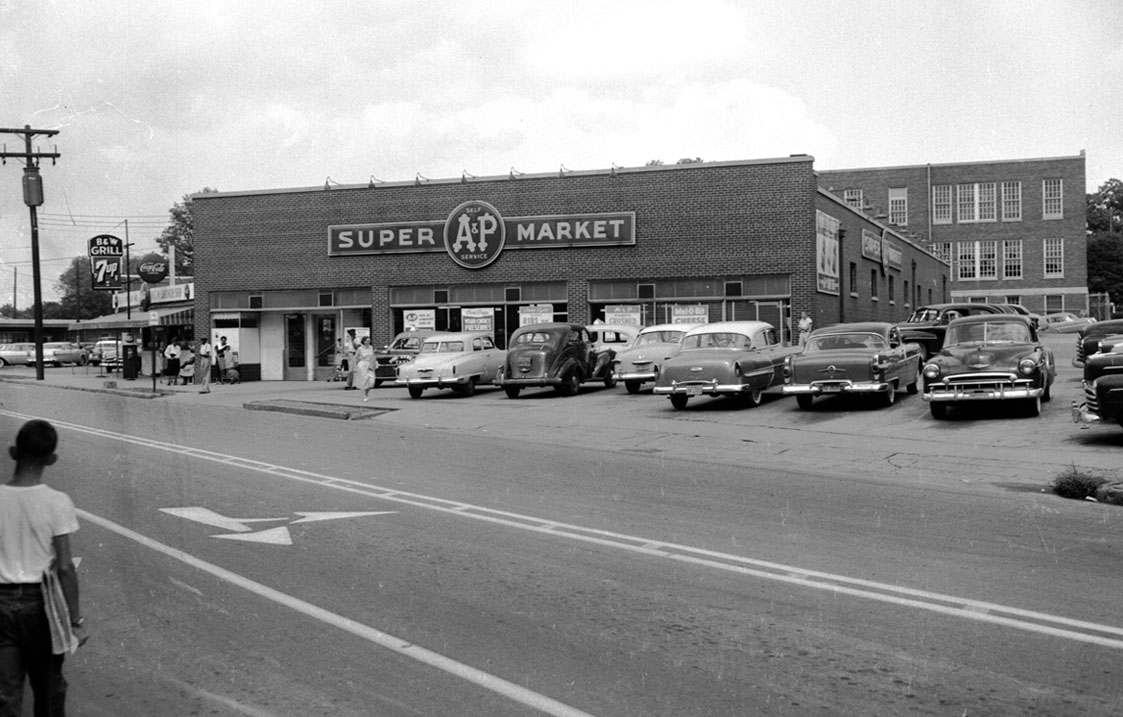
Looking northeast from North Magnum, 1950s (Courtesy Herald-Sun)
A residential neighborhood during the 1890s-1910s, the intersection of North Mangum and East Chapel Hill was, by the 1920s, the 'border' between the growing downtown commercial area and the residential neighborhood.
Looking northeast, with East Chapel Hill St. on the right and North Mangum on the left, 1920s. (Courtesy Durham County Library)
In the above pictures, you can see the houses just beyond the commercial structures, as well as the roof of the
Fuller School, the taller roof just east on East Chapel Hill. The end of East Chapel Hill at Cleveland St. can be seen one block away, prior to the construction of the later
First Baptist Chuch.
As noted yesterday, 'filling stations' were a frequent harbinger of the impending transition of the neighborhood. The earliest pumps were simply curbside machines located downtown. The dedicated stations, such as the one above, began to sprout up during the 1920s in Durham, frequently locating on previously-residential corner lots.
Looking northwest, 1920s. (Courtesy Duke Archives)
This commercial expansion tapered off somewhat in the 1930s and early 1940s, but the later 1940s and 1950s rekindled the growth, and the massive adoption of cars for transportation meant more and larger parking lots.
Looking north-northeast, early 1940s (Courtesy Wayne Henderson)
Apparently not long after the above photo, the service station (see the page for that building
here) and houses were torn down and replaced by a grocery store, a new location for the A&P that had been
one block away. The store first appears at this address in the 1942 City Directory.

Looking northeast from North Magnum, 1950s (Courtesy Herald-Sun)
Strike at the A&P, 08.27.58 (Courtesy Herald-Sun)
Strike at the A&P, 08.27.58 (Courtesy Herald-Sun)
Strike at the A&P, 08.27.58, looking west with the businesses at the
northwest corner of Chapel Hill Street and
407-409 North Mangum in the background (Courtesy Herald-Sun)
(Courtesy Durham County Library)
A&P appears to have had the supermarket monopoly in Durham, from what I can tell.
By the 1960s, at the urging of the Downtown Merchants' Association, the city council had agreed to push forward with the Tarrant plan to create a high-capacity circulation loop around the downtown core (what would be left of it) which would allow congestion-free access to downtown, and to the continuous ring of scrumptious parking lots and decks immediately inside the loop.
This was going to save downtown from the mall.
Thus the A&P was torn down.
The A&P closed; the sign on the door has fallen down - it says that it will be closed "03.26.7?" I can't read the last number, as it's blocked by the door.
(Courtesy Herald-Sun)
Closed. (Courtesy Herald-Sun)
Demolished (Courtesy Durham County Library)
And a tortured piece of roadway was built, connecting Holloway St. (which had previously continued down what is now City Hall Place) with the terminus of Morgan St. at Mangum.
This lopped off the corner of this city block, which the city decided would be a park - a new Rotary Park. The previous Rotary Park had been located at Market and East Chapel Hill next to the
Academy of Music, prior to the construction of the
Washington Duke Hotel.
The amputated corner of N. Mangum and East Chapel Hill, 1990. (Courtesy Durham County Library)
It's still gamely attempting to be a park today.
If someone asked me to give a Powerpoint presentation about how the city misunderstands public space, this would be my first slide. It doesn't matter what you do with this space - people will never use it unless you tame the roadways and improve the buildings around it. The primary public use this gets is by the occasional person who takes a bath in the fountain.
This building was the subject of a What's It Wednesday?! post on Open Durham's social media accounts (Facebook and Instagram), the week of April 3, 2019. Follow us and stay tuned for more finds!

 Looking northeast from North Magnum, 1950s (Courtesy Herald-Sun)
Looking northeast from North Magnum, 1950s (Courtesy Herald-Sun)
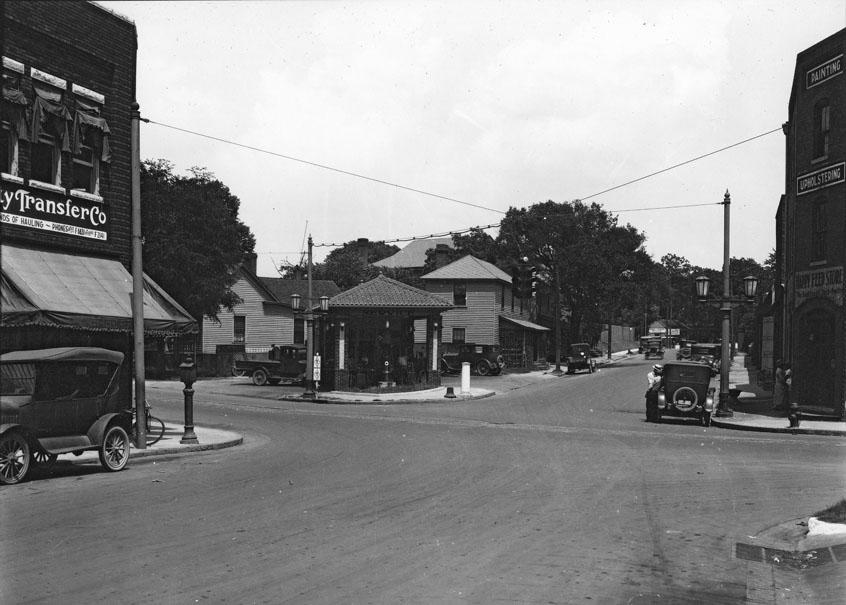
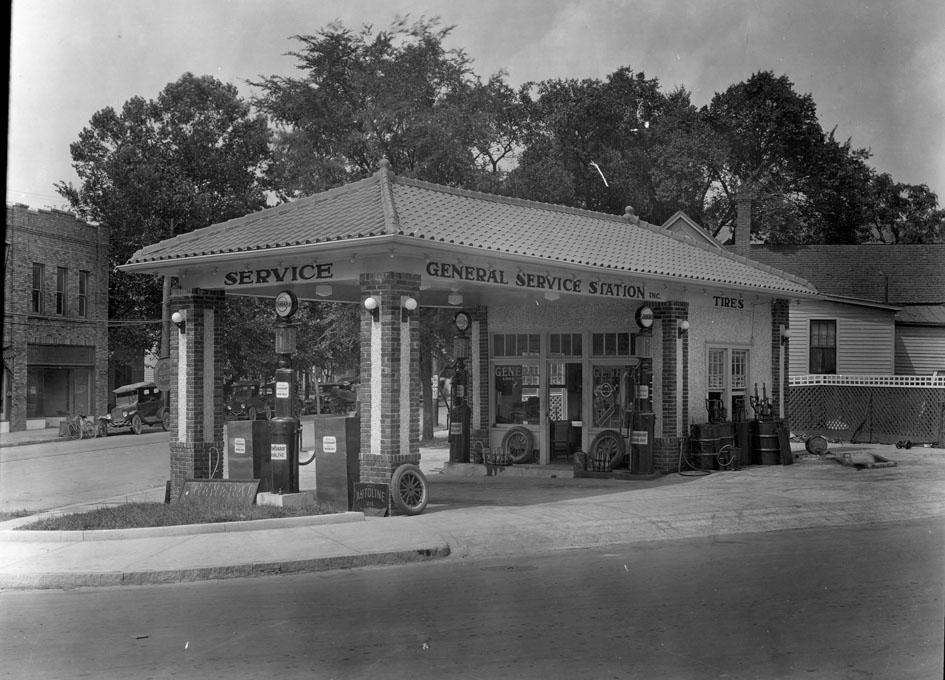
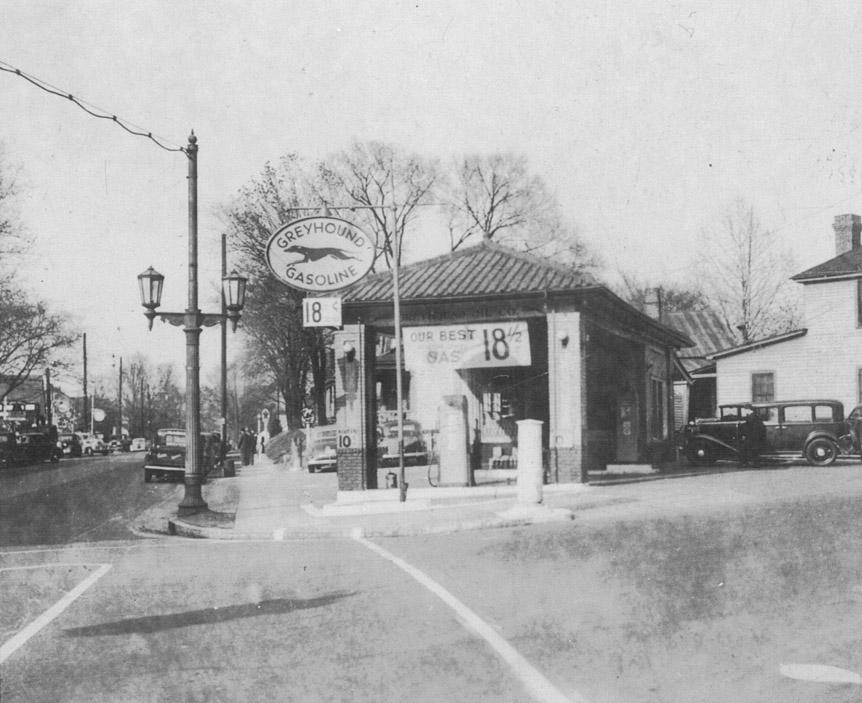
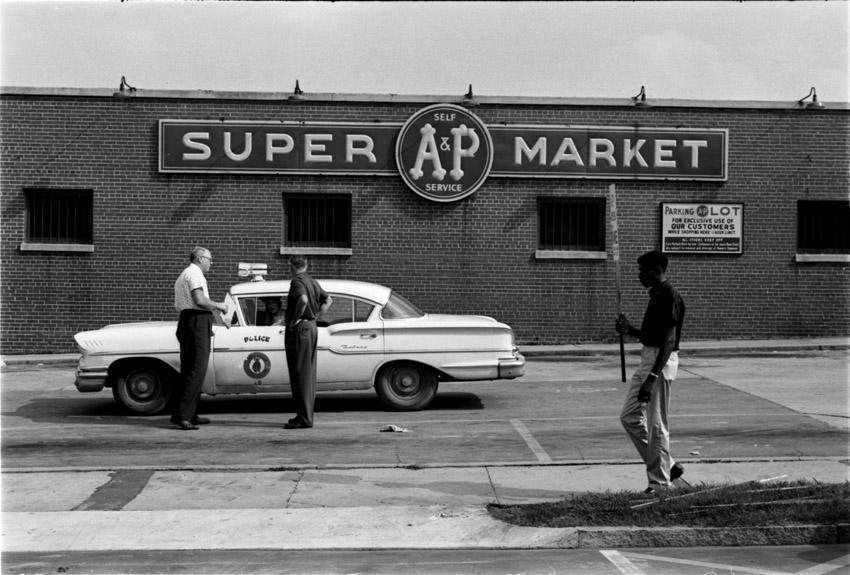
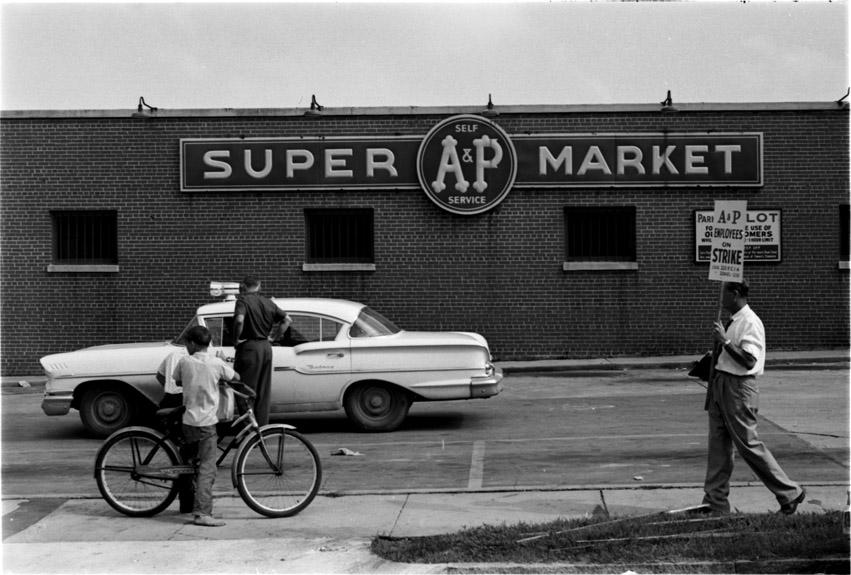
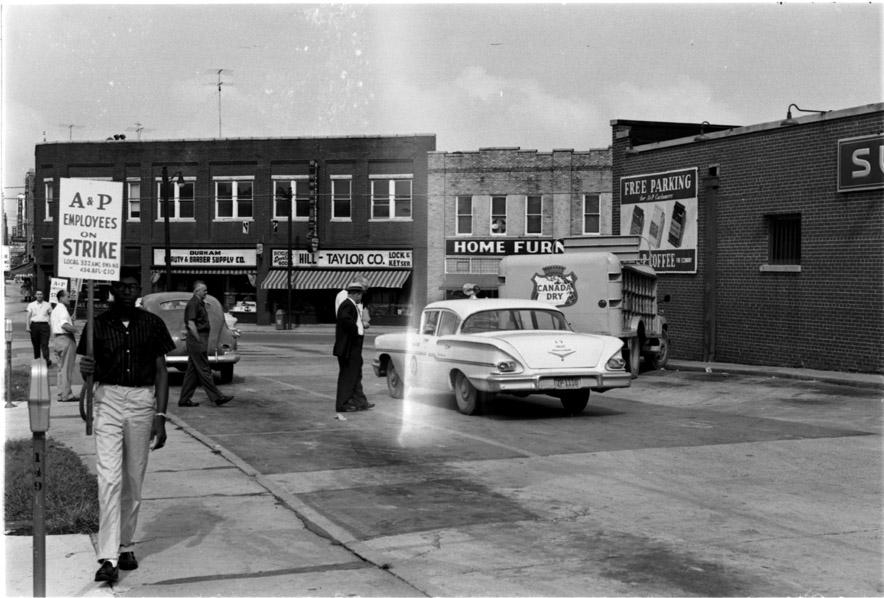
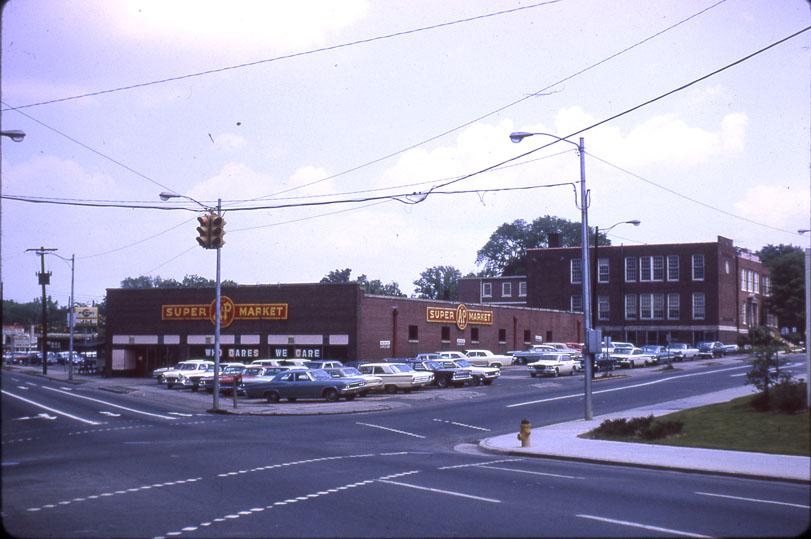
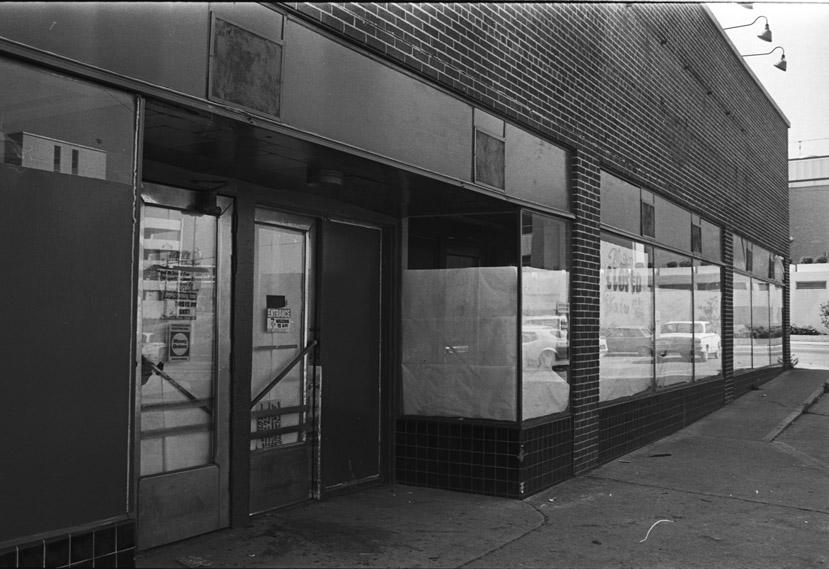
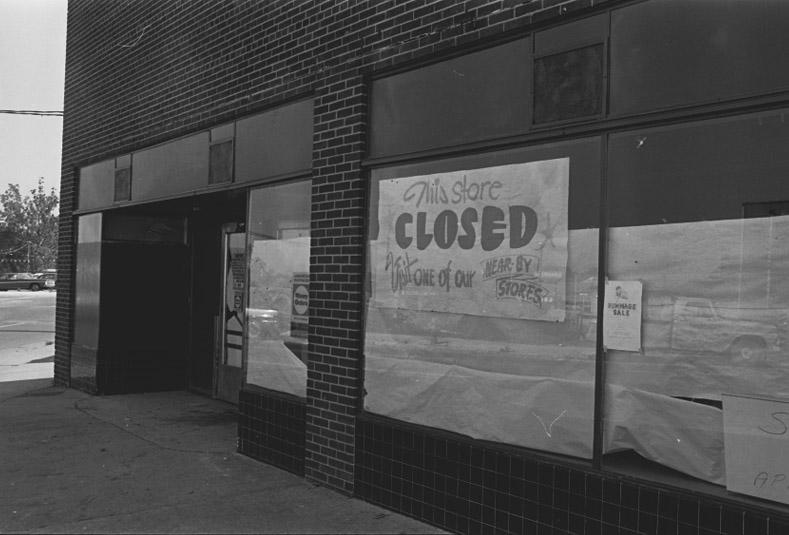
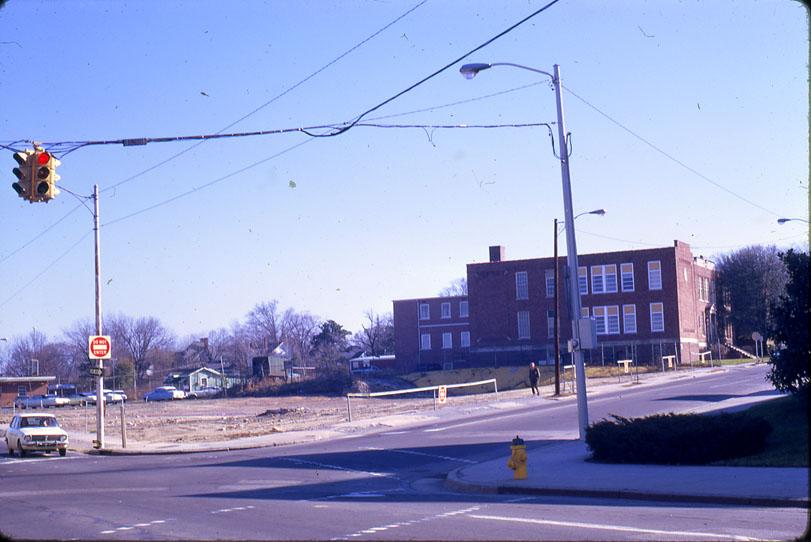
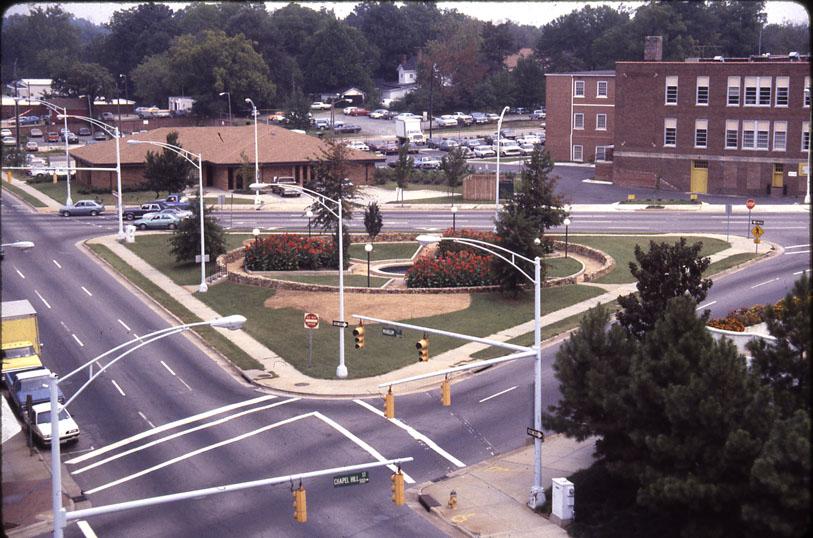
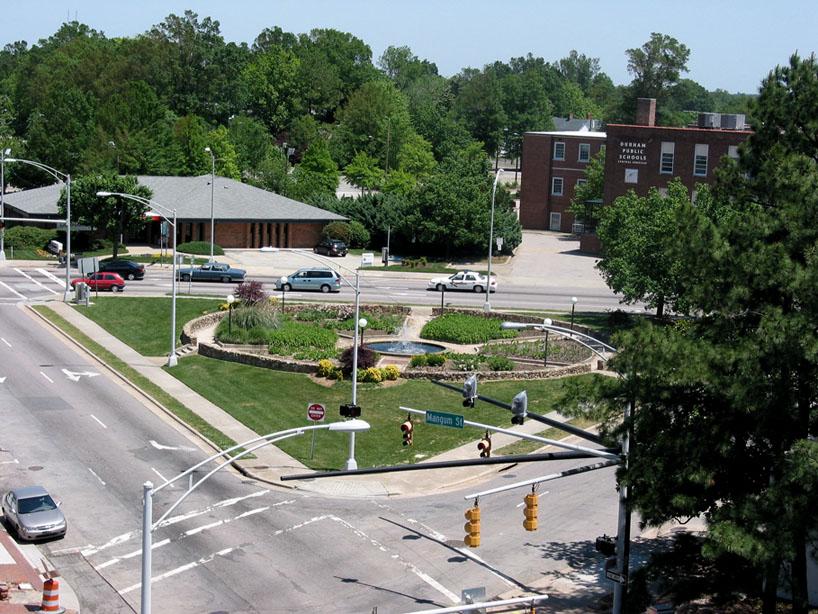
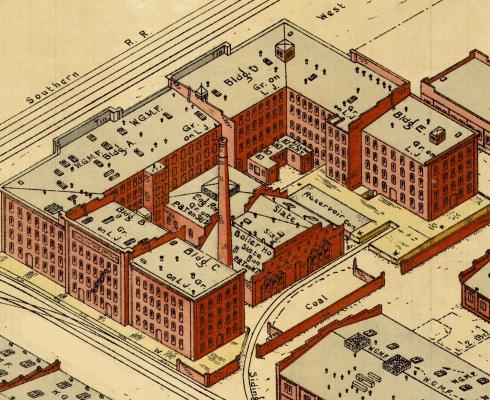
Comments
Submitted by RikR on Wed, 6/20/2012 - 8:17pm
I spent many a Saturday morning following my mother up and down the aisles of that store.
Add new comment
Log in or register to post comments.